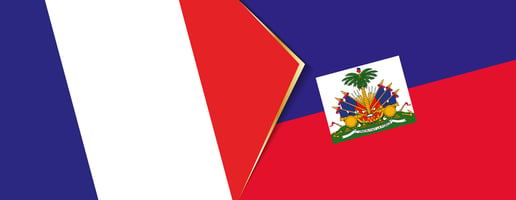Why intercultural matters go beyond translating words
Common Document Translation Mistakes and How to Avoid Them: A Guide to Accurate and Effective Communication with Your Target Audience
Translation is an essential service that connects people from different linguistic and cultural backgrounds. Whether you're a business owner expanding into new markets or someone looking to communicate with people who speak a different language, translation services can help you reach a broader audience.
Finding the right translator can be a daunting task, and the quality of your translation can make or break your communication efforts. In this guide, we will discuss five common document translation mistakes and provide real-life examples of each mistake to help you understand the importance of avoiding them.
1. Literal Translation
Literal translation is a common mistake made by inexperienced translators. This happens when a translator renders a word-for-word translation without considering the syntax and grammar of the target language. This approach can lead to an incorrect and often confusing translation, which may not be suitable for your target audience.
Example:
When KFC expanded its business to China in the 1980s, it quickly realized the importance of translation. KFC's famous slogan, "finger-lickin' good," had become synonymous with their brand in America. The company wanted to ensure that the same message was conveyed to its Chinese audience, so they translated the slogan directly into Chinese, which resulted in a hilarious and awkward mistake.
In Chinese, the direct translation of "finger-lickin' good" is "chī shǒu jiǎo," which means "eat your fingers off." This translation caused confusion and amusement among Chinese consumers, who found it bizarre and even frightening.
How to avoid this mistake:
Hire translators with a good grasp of the source and target languages’ syntax, phraseology, and etymology. They should be able to convey the message accurately in the target language while maintaining the tone and style of the original document. Additionally, you can request a sample translation to ensure the quality of the translation before committing to a full project.
2. Exaggeration of Meaning
Exaggeration of meaning is a common mistake made by novice translators. This is when a translator overdoes translation duties, leading to an exaggerated translation of the original text. This mistake can be costly for your business, leading to confusion and even negatively impacting your brand's image.
Example:
When Parker Pen expanded to Mexico, they ran into a translation mishap with their slogan, "It won't leak in your pocket and embarrass you." The original English slogan was meant to emphasize the functionality and reliability of their product. However, when translated into Spanish, the phrase "embarrass you" was rendered as "embarazar," which is a false cognate that means "to impregnate" in Spanish.
As a result, the translated slogan communicated an unintended and inappropriate message, leading to confusion and even damaging the brand's reputation. This highlights the importance of understanding the nuances of the target language to avoid such mistakes.
How to avoid this mistake:
Look for translators who have experience in your industry and can understand the technical terms and complex sentences in your document. They should be able to convey the message accurately in the target language without exaggerating its meaning. Additionally, you should provide clear instructions to the translator and communicate your expectations.
3. Use of Wrong Terms
The use of wrong terms is a common mistake made by beginner translators. This mistake can be particularly challenging when translating words with different meanings in different contexts or cultures.
Example:
Recently, a client in the medical field approached our team with concerns about a previously translated document. They received feedback from Haitian readers who were having difficulty understanding the language and had doubts about the accuracy of the translation. Upon reviewing the document, we noticed that the word "exposure" had been translated as "ekspozisyon." Although technically correct, in Haitian Creole, this term is often associated with exhibits or displays rather than the intended meaning of exposure to a substance or condition. A more suitable term for the intended meaning would be "kontak." As a team of experienced translators, we strive to ensure accurate translations that convey the intended message in the target language.
How to avoid this mistake:
Work with translators who understand the specific terminology used in your industry and the cultural nuances of the target language. They should be able to use appropriate vocabulary and syntax while maintaining the tone and style of the original document. Additionally, you can provide a glossary of key terms used in your industry to ensure accuracy in the translation.
4. Lack of Communication Skills
Effective communication between the client and translator is crucial for understanding. Lack of communication skills can lead to poor translations and misunderstandings, resulting in an inaccurate final product.
Example:
We recently discovered the Haitian Creole translations on a large hospital's newly redesigned website. While we were initially happy to see the effort to provide translations for their Haitian Creole-speaking patients, our excitement quickly faded when we noticed a serious translation mistake.
The Haitian Creole translator used "dejwe" to refer to patients with substance abuse conditions. However, this term is commonly used to insult people with mental health illnesses in Haitian Creole. We believe the hospital did not intend to use an offensive term to refer to its patients. Our team would have worked together to find a term that accurately conveys the intended meaning and does not carry any negative connotations.
How to avoid this mistake:
It's important to work with translators who have excellent communication skills and are willing to interact with you at every level of the translation process. They should be able to ask for your feedback on terms that could have an adverse reaction from your target audience and alert you if they suspect a particular term or phrase may cause offense. Additionally, you can provide a glossary of terms used in your industry to ensure the quality of the final product.
5. The Problem of Slang and Colloquialisms
The problem of slang and colloquialisms is a common mistake translators make when translating documents that use these language subtleties. This mistake can lead to common translation problems and inaccuracies in the final product.
Example :
We've recently encountered another example of a poor Haitian Creole translation - for the expression "Easy as pie," the translator used the phrase "Fasil tankou tat.", which doesn't make sense to Haitian Creole speakers. A more appropriate translation would have been "Fasil kou dlo", which is a common Haitian expression that literally translates to "easy as water".
How to avoid this mistake :
When looking for a translator, it is essential to work with someone who is not only fully bilingual but also bicultural. They should have a deep understanding of both the source and target cultures, including the slang and colloquialisms used in the document's language. A skilled translator should pay close attention to these subtleties and ensure that they accurately translate these nuances to provide the intended meaning of the document.
Finding the right translator
Here are six steps you can take to find the right translator:
1. Look for translators with experience in your industry: When searching for a translator, look for one with experience in your industry. They should have a good understanding of the terminology used and any cultural nuances that may be relevant to your document.
2. Request sample translations: Before committing to a full translation project, ask the translator for a sample translation. This will give you an idea of the quality of their work and whether they can accurately convey the tone and style of your document.
3. Communicate your expectations clearly: Make sure to communicate your expectations to the translator clearly. Let them know what tone you are aiming for, any specific terms or phrases that are important, and what the purpose of the translation is.
4. Provide context: When providing the document for translation, make sure to provide any necessary context to help the translator understand the intended meaning of the text. This can include information about the target audience, the purpose of the document, and any cultural references that may not be immediately apparent.
5. Check for affiliations: Look for translators who are affiliated with organizations such as the American Translators Association. This can be a good indication of their level of expertise and commitment to their profession.
6. Ask for references: Don't be afraid to ask the translator for references or testimonials from previous clients. This can help you understand their track record and whether they are a good fit for your project.
At Creole Solutions, we specialize in providing document translation services for the Haitian community. Our team of native speakers has a good understanding of both Haitian and American cultures and can ensure accurate translations that convey the intended meaning of the original document. We also have a Creole Think Tank where we research and brainstorm on different terms and expressions to ensure everything is preserved in the translation. This process helps us maintain the tone and style of the original document while providing accurate translations for our clients.
If you're looking for document translation services that you can trust, contact us today. Our experienced translators will work with you to understand your requirements and expectations and provide accurate and timely translations. With our help, you can communicate effectively with your target audience and build a network of satisfied clients.





